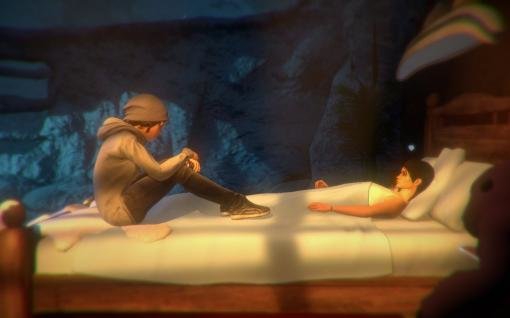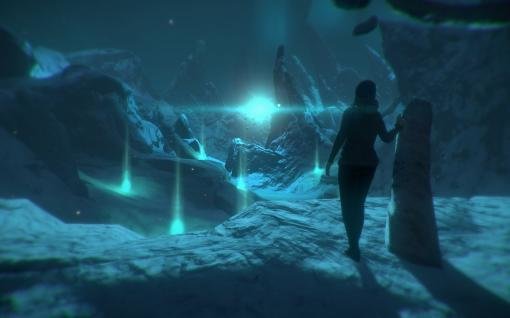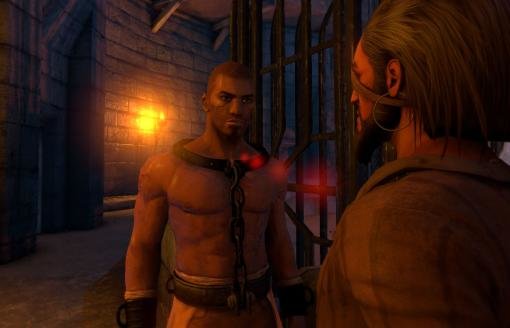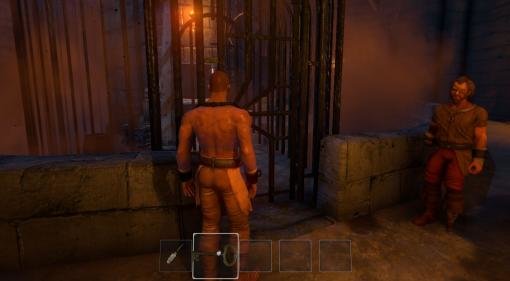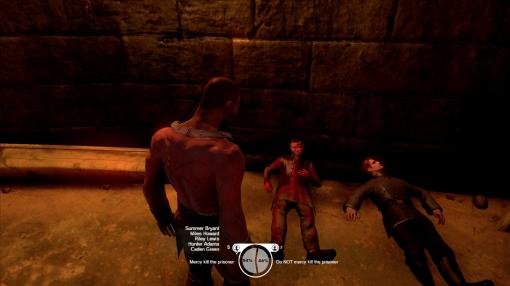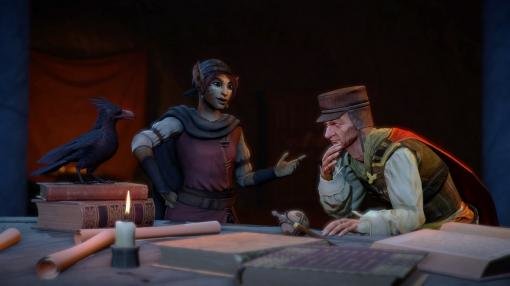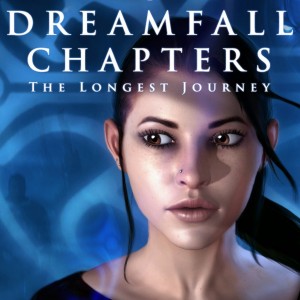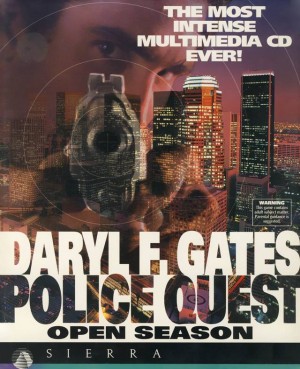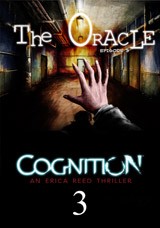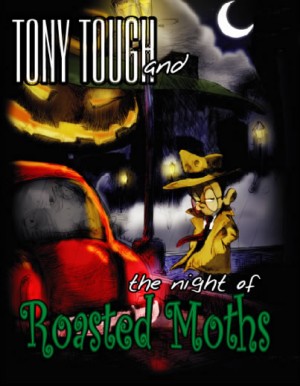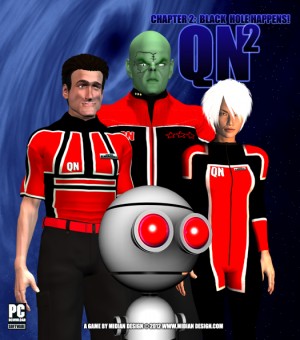GDC 2014 - Dreamfall Chapters archived preview
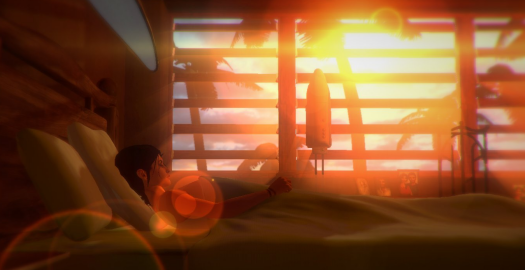
I’m leaving soon—but I’m not afraid. If death is the end, I know that our dreams remain behind. So whoever you are, whatever you plan to do, good luck. I’m sure you’ll need it.
Nearly eight years after a comatose Zoë Castillo imparted these words near the end of Dreamfall, we can finally breathe easy. Zoë isn’t dead.
For a long time, any return to the twin worlds of Stark and Arcadia—first introduced in 1999’s The Longest Journey and later expanded upon in 2006’s Dreamfall—seemed like a pipe dream. Then in November 2012, series creator Ragnar Tørnquist broke away from Funcom and took the IP with him, securing the rights to make a Dreamfall sequel through a licensing deal with his former employer. A $1.5M Kickstarter campaign followed, and as Ragnar and co-writer Dag Scheve showed us recently at the Game Developers Conference, the sequel first teased in 2007 is finally being realized.
Dreamfall Chapters teaser
[Though the sequence described below occurs at the very beginning of the game, Ragnar suggested we mark this section of the preview with a SPOILER WARNING for those players who want to discover Zoë’s fate themselves.]
Zoë’s story picks up where it left off: in a hospital room in Casablanca and an eerie, snowy landscape known as the Storytime. At the end of Dreamfall, a machine named The Dreamer was brought to market, turning dreams into an addictive form of entertainment. These dreams are now being used to reshape reality. For about a year, Zoë’s mind has been trapped between life and death in the place “where all stories begin and end” while her body lies in a coma. (To refresh your memory on Dreamfall’s story, look back at our 4-star review.)
As the camera pans around Zoë’s serene, sleeping form, much as it did in Dreamfall’s opening scene, it’s clear that Dreamfall Chapters’ art direction is in good hands. The 3D graphics look as good as I remember Dreamfall’s looking when I first saw it in 2005—which is to say, in step with today’s technology. Unfortunately, a demo on a laptop in a crowded convention center hallway wasn’t the best venue for savoring the game’s aesthetic, but what I saw looked absolutely beautiful, and the game’s only in the alpha stage.
The scene shifts from Zoë’s bedside to the Storytime, where she has thankfully acquired some warm clothing to cover up those white undies we last saw her in. Coma Zoë is here too, in her hospital bed, and you can examine her and the keepsakes around her to get some background about her character and the story so far. “This is basically how the game starts. You’re introduced to Zoë, to her existence now,” Ragnar explained. “Part of her job here is to save dreaming spirits—a lot of people are trapped in nightmares.” He walked Zoë away from the hospital bed and onto a ledge blanketed in snow. Moments later a woman, silhouetted in a white glow, fell past screaming.
“We can help this person get out of their dream. Super simple puzzle: try to grab onto her as she falls past,” Ragnar said, clicking to grab the woman’s wrist as her falling body lined up with Zoë’s. Unlike in Dreamfall, “There’s no action in the game—there’s no combat—but there will be points that require a little bit more observation and reacting to things on the screen. But there will never be a death scenario. [If you miss], you’ll get another shot at it.”
By helping these dreaming spirits, Zoë will learn about the people trapped in their nightmares and the situation in Stark. “This is something to do with the dream machine, how it’s affecting the world now,” Ragnar explained. “That is basically the core of the story—it plays out in a lot of different ways, but it is the core of the story. Dreamfall Chapters is the second and concluding part of the dreamer cycle; it’s about the Dream Machine and the nature of dreams and Zoë’s role in this.”
[end spoiler]
Zoë’s fate wasn’t the only thread left hanging at the end of Dreamfall—the game’s other protagonists, Azadi assassin Kian Alvane and freedom fighter April Ryan, were in dire straits too. To catch us up on Kian’s situation, Ragnar and Dag showed a section set in Arcadia about 45 minutes into the game. Kian has spent the past year in Mercuria’s Friar’s Keep prison awaiting execution for treason. An earlier-in-development version of this scene can be viewed in the video below; the version we saw at GDC was farther along in terms of interface and graphics, but the basic gameplay is the same.
Earlier version of Friar's Keep playthrough
As the scene opened with Kian sitting dejected in his cell, Ragnar explained the importance of dialogue and the protagonists’ internal monologue in Dreamfall Chapters: “In a lot of games, when you choose [dialogue] you see the line the character’s going to say, or there’s a key word with no indication of what the character’s going to say.” Noting that the latter often removes players’ control over their character’s words—you pick an option thinking you know what they’ll say, and turn out to be wrong—Red Thread is trying to solve the problem by “giving you access to the character’s thoughts.”
Their method for doing this became apparent when the warden entered and two topics appeared on screen: Kian could either remain silent or ask why the warden had come. When Ragnar moved the cursor over each of these options, Kian expressed his thoughts in voiceover, letting the player in on how either dialogue choice would play out. “In a lot of adventure games and in our previous games, the character has to go and say a lot of weird stuff out loud because that’s the only way to tell the player what that person’s thinking,” Ragnar said, opting to play Kian as the strong, silent type. “This feels very natural.”
During a largely one-sided conversation between the warden and a stoic Kian, Ragnar explained how dialogue figures into Dreamfall Chapters’ gameplay: “We want people to pay attention, listen. Don’t just skip because you want to get to the gameplay, this is the gameplay. Half the game is dialogue. We have huge dialogue trees, you can talk to characters about everything, but you also have to listen to what they say. Everything that the warden says in this scene will be important in fifteen minutes when you get to a dialogue puzzle. In this case the warden is revealing aspects of his personality that you can use against him later on.”
Though some dialogue, like this conversation with the warden, will be critical to story progression, up to two-thirds of the game’s script is optional. Who you decide to talk to and what you say to them will personalize your experience. “A lot of what you say in dialogues affects the characters and their relationships,” Ragnar added. “If you’re not listening you could say the wrong thing and that character would do something to you later on. That won’t destroy your experience or majorly change the storyline, but it will affect your journey through the game.”
Told by the warden that he would hang in the morning, Kian was left alone in his cell when the Captain—a member of the rebellion we met in Dreamfall—showed up to break him out. “A lot of adventure games are very static; you stand there and talk to people. We’re fans of walk and talk,” Ragnar said as Kian followed the Captain out of the cell. “It’s more natural, people don’t ever sit there and talk… There are a lot of points in the game where, if you’re the impatient sort like me, you can explore a little bit while the characters are talking.”
With Kian and the Captain chatting as they moved through Friar’s Keep, Ragnar explained that the game will support a combination of keyboard and mouse controls (WASD for movement; mouse for camera) or a gamepad. Initially they also developed a point-and-click mode, but found that none of their early players were using it. “It’s very context sensitive,” Ragnar said of the keyboard controls, directing Kian through Friar’s Keep’s hallways and up a winding staircase. “You’ll always get a little dot that shows what you can interact with. It’s not about pixel hunting, it’s about figuring out what to do.”
What to do will frequently involve finding and using inventory items: “Inventory puzzles are often abstract and weird; we’re trying to embrace the humor of that while also trying to be, not realistic, but at least as sensible as possible.” [Puzzle spoiler warning] In the example we saw, Kian and the Captain needed to find a long, thin item to pick a lock. Kian picked up a broom (too long and not thin enough) and headed into an empty cell. Looking out the window revealed Azadi soldiers shooting arrows from below. Combining the broom with a pillow from the cell bed created a makeshift dummy that could then be used to trick the soldiers into firing an arrow into the pillow. [end spoiler] The interface for all of this seemed straightforward: press Tab to display inventory items in a row at the bottom of the screen, then click one to select it or drag one over another to combine them.
Besides adventure game mainstays like dialogue and inventory puzzles, Dreamfall Chapters will follow in the footsteps of Heavy Rain and The Walking Dead by presenting players with choices that influence the story. “We have something called, ‘The balance has shifted,’” Ragnar explained, referencing the delicate link between the twin worlds of Arcadia and Stark. “Every time you make a choice in the game, you get the ‘balance has shifted’ icon, so you know that was significant. And when [something happens as] a result of that, we also tell you, ‘This is because of something you did earlier.’ This makes it feel like the story reacts to you and it feels much more personal.”
Similar to the internal monologue that gives context for what your character is about to say—and unlike Telltale’s “Clem will remember that” messages that only display after you’ve done something significant—Dreamfall Chapters will indicate beforehand when your decision will cause a shift in the balance. We encountered one such decision point when Kian and the Captain came upon an injured prisoner and a dead guard lying on the floor. “The inmate begs to be killed. He knows he’ll be tortured if the guards find him,” Ragnar explained. “We can pick up the shiv that this guy used to kill the guard. And now we’re going to choose what to do. We can leave him there and run off, and if we do we’ll hear the result of that later on. Or we can assist him in his death, and that has consequences as well.”
As the prisoner begged Kian to finish him off, the “balance has shifted” icon appeared to let us know that Kian’s decision here would matter. At this point we could also see what percentage of players made which decision, and even which path was chosen by friends from services like Facebook, Steam, or PSN. Such metrics are included to encourage conversation outside of the game: “We did it to create this virtual water cooler where decisions are talked about, where decisions are discussed, where decisions are not in isolation. You’re not the only one playing the game, you’re part of a whole world playing the game.” (That being said, if you prefer more of a solo experience you can choose to turn off the stats.) Seeing what your friends did should add a community element to otherwise solitary gameplay, but Ragnar stressed that there are no correct or incorrect choices, no ‘good’ or ‘evil’ path: “They’re not black and white choices. We’re trying to make it so it’s always a moral quandary. And trying to never say, ‘You did the right thing.’”
Arrow in hand, Kian was able to open the locked door, but at the top of the stairs the warden blocked his way. This was where listening carefully to that initial dialogue sequence paid off. [puzzle spoiler warning] “We learned earlier he doesn’t take well to threats and he listens to reason, so we can choose to threaten him or reason with him,” Ragnar explained. “He told us he’s a practical man, he’s not a man who’s trusting of people, so that gives us a clue. And you have a choice to try to bribe him, to try to threaten his family, or to appeal to his sense of family. He told us family’s important but he doesn’t react well to threats.” [end spoiler] Choose the right dialogue options and the warden will step aside. If you don’t remember what was said earlier you can redo the sequence as many times as necessary, with any incorrect options you’ve already tried eliminated. So even if you clicked too quickly through the initial dialogue, you’ll be able to progress through trial and error.
Having successfully convinced the warden to let him pass, Kian was faced with another big choice: let the warden live or kill him. Seeing that 90% of players so far had taken the pacifist route, I suggested we shift the balance and slit the warden’s throat. “This is going to change the story and have an effect near the end of the game, doing this,” Ragnar said while the Azadi assassin took down the pleading warden. But even though choices like this will change aspects of the story, Dreamfall Chapters won’t have multiple endings. “The end of the journey’s the same, but the way you get there, the characters who will be with you, the relationships you’ll have, what happens to you getting there—those will change. We want players to be able to shape the journey, but everything is destined. It is a game about destiny, after all.”
As for April Ryan, run through by an Azadi spear near the end of Dreamfall—what is her destiny? We didn’t see her during our demo, and Ragnar said that when players reach these points in the game, they won’t know her fate yet, either. So the wait for answers continues, but with Red Thread Games hoping to ship Dreamfall Chapters by the end of 2014, a return to the balance has never been closer.


